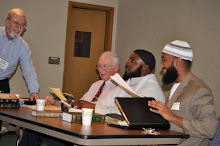St. Cloud looks at race disparity suspension gap in schools
By Dave Aeikens • daeikens@stcloudtimes.com • March 21, 2010
Comments(160)Recommend(1)Print this page E-mail this article Share
Del.icio.us Facebook Digg Reddit Newsvine Buzz up!
Twitter FarkIt Type Size A A A Next Page1| 2| 3| 4Previous PageIn a report about equity efforts in St. Cloud schools, the number sticks out.
Black students, which make up 15 percent of the student body, account for 51 percent of the out-of-school suspensions in 2008-09.
That number has St. Cloud school officials asking why so many black students are being suspended. They are setting out to try to determine the answer and come up with a solution that reduces suspensions for all students.
It’s a big issue for students, families and the schools, said Julia Espe, director of curriculum, instruction and assessment.
Finding a solution is key to the goal of improving student achievement.
“We need to study all behavior and help students learn how to behave but also look to be very intentional about our response,” Espe said.
In the 2008-09 school year, there were 880 suspensions involving 537 students in St. Cloud school district schools. Of those, 453 were black and 356 were white. White students make up 40 percent of those suspended and are 76 percent of the student body of about 9,400 students. The numbers include students who have been suspended more than once. Unduplicated, white students make up 46 percent of the suspensions and blacks 44 percent.
St. Cloud is not the only district in Minnesota with a disparity. Statewide, blacks make up 9 percent of the student body and 40 percent of the discipline cases in 2007-08, the most recent numbers available from the Minnesota Department of Education.
“It is a very complicated issue, very multipronged issue the district is trying to take a look at,” said George Nolan, education equity services coordinator for the district.
Key issue
The suspension issue is key because it stands in the way of another major district goal. School leaders want to close an achievement gap between students of color and white students. The disparity is biggest between whites and blacks, with whites scoring in some cases at a 40 percentage point difference from blacks on state reading exams.
If students are suspended and not in school or are having discipline problems, they cannot be taught, they cannot learn and they cannot improve in reading, math and other areas.
The district already has programs intended to teach students appropriate behavior in schools with the hope that students’ actions never reach the level that they need to be suspended.Discipline
Most of the discipline is handled by the assistant principals, who have the authority to suspend a student or discipline a student for violations of the student handbook without approval from the principal or a senior district administrator.
Expulsions are rare. Eight students have been expelled from the five secondary schools in the past five years. Suspensions typically happen when there is a safety issue, such as a physical altercation, which can be bullying or one person striking another.
Technical High School Assistant Principal Chris Blauer said assistant principals work together to hand out consistent and fair discipline.
Most of the discipline is handled by the assistant principals, who have the authority to suspend a student or discipline a student for violations of the student handbook without approval from the principal or a senior district administrator.
Expulsions are rare. Eight students have been expelled from the five secondary schools in the past five years. Suspensions typically happen when there is a safety issue, such as a physical altercation, which can be bullying or one person striking another.
Technical High School Assistant Principal Chris Blauer said assistant principals work together to hand out consistent and fair discipline.
“We work to keep kids in school. It is something we are very aware of. We work try to work proactively with all students to be successful,” Blauer said.
Solutions
District staff are trying to find a way to reduce the disparity in suspensions between blacks and whites. Espe said it could take up to five years to even out the suspension numbers. One program the district is considering for next year would offer an alternative to suspensions, keeping students in school rather than at home. It would move students to a location outside of the school they attend with a teacher and counselor.
“We know they need an intervention. We just didn’t have anything to support that,” Espe said.
St. Cloud had a similar program for four years paid through a federal grant that showed some success, Espe said. That program ended when the grant expired. Among the things the program accomplished was most students completing homework and a reduction in the average number of repeat offenses after being in the program, according to a program report.
The district has programs in place that try to stem the need for suspensions. One is Positive Behavioral Intervention and Supports, or PBIS. The effort teaches children proper behavior and expectations before problems arise. It turns the school into a proactive force rather than reacting to every situation, said Charlie Eisenreich, principal at Apollo High School.
“You are recognizing or potentially rewarding students for appropriate behaviors and teaching students what appropriate behaviors are,” Eisenreich said.
Katrina Scott, who is the president of the St. Cloud Chapter of the National Association of the Advancement of Colored People, said she is satisfied with the efforts the schools are making to address the disparity in suspensions. She said the issue will take more than just school action to resolve.
“It is not just the superintendent coming up with a solution. What can we do as a community to help him to make sure kids feel safe in school?” Scott said.
Behaviors
Behaviors
The school district needs to be careful about what conclusions it draws from the suspension disparity, or it might not solve the problem, board member Les Green said.
Green chairs the board’s equity and integration committee. He also is director of cultural diversity for the education department at St. Cloud State University. He has spent his career studying education and race.
Green said it is important to examine the student’s behaviors before drawing any conclusions about why the disparity exists between the number of whites and blacks who are suspended.
“The danger in this thing is trying to argue the kids of color didn’t deserve suspension when we don’t know if they did. Sometimes when you argue that point you miss the broader picture. Did similar people who did similar things get similar consequences?” Green said. “If we jump to racial differences right away, we may miss the ability to help the kids of color stop being suspended.”
Green said the district also needs to look at what is being done to change the behavior.
“Teaching kids to operate properly, it is not a cultural issue. If people want to suggest to me that black children have a different cultural behavior ... To me, that is idiosyncratic behavior,” Green said.
Luis Saenz, director of equity services for the school district, said having more information about the suspension disparity will help solve the problem. The district needs to take a deeper look.
“It is something we need to really be intentional about, developing strategies to curtail this. In general, we need to look at this very closely and continue to monitor it so we are responding accordingly to make sure we are taking steps to decrease the number of out-of-school suspensions,” Saenz said.
Green said one way to improve the disparity is to find students doing well, figure out what they are doing and try those strategies on students who are not succeeding.
Positive examples
School leaders want the values and work ethic of students such as Agwa Ojulu, a senior at Technical High School, to rub off on others who might not be as eager to keep within the rules and stay in school.
School leaders want the values and work ethic of students such as Agwa Ojulu, a senior at Technical High School, to rub off on others who might not be as eager to keep within the rules and stay in school.
Ojulu is the daughter of Sudanese immigrants. She plans to attend the University of Minnesota next year. She takes advanced placement courses and is active in theater. She said her parents have instilled in her the need to work hard to get what she wants and to set a positive example for her younger siblings.
“It would be easy for me to go off the fast track and go in the wrong direction. With everything in life, it is a choice,” Ojulu said. “It takes a lot for me to keep going. It takes a lot to see my goal to go to the U of M (realized).”
Ayoolamide Gazal, a junior at Tech, said she has lots in her life to keep her motivated to succeed in school.
She plays soccer, is on student council and in National Honor Society. Her father is a professor at St. Cloud State University and instills the importance of education in her.
She said she likes coming to school.
“I never really thought about getting suspended,” Ojulu said. “My schedule is busy. There is no time for me to do things that would get me suspended.”
Subscribe to:
Post Comments (Atom)


















































No comments:
Post a Comment